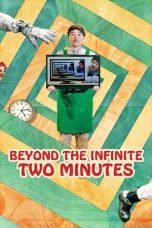- Source: Event-driven finite-state machine
In computation, a finite-state machine (FSM) is event driven if the transition from one state to another is triggered by an event or a message. This is in contrast to the parsing-theory origins of the term finite-state machine where the machine is described as consuming characters or tokens.
Often these machines are implemented as threads or processes communicating with one another as part of a larger application. For example, a telecommunication protocol is most of the time implemented as an event-driven finite-state machine.
Example in C
This code describes the state machine for a very basic car radio system. It is basically an infinite loop that reads incoming events. The state machine is only 2 states: radio mode, or CD mode. The event is either a mode change from radio to cd back and forth, or a go to next (next preset for radio or next track for CD).
Same example in Ginr
Ginr is an industrial-strength compiler producing multitape finite state automata from rational patterns, functions and relations expressed in semiring algebraic terms. The example below shows a binary rational function equivalent to the above example, with an additional transition (nil, radio) to set the system into its initial state. Here the input symbols nil, mode, next denote events that drive a transducer with output effectors cd, nextTrack, radio, nextStation. Expressions like this are generally much easier to express and maintain than explicit listings of transitions.
StateMachine = (
(nil, radio)
(
(mode, cd) (next, nextTrack)*
(mode, radio) (next, nextStation)*
)*
(
(mode, cd) (next, nextTrack)*
)?
);
Compilation produces a subsequential (single-valued) binary transducer mapping sequences of events to sequences of effectors that actuate features of the CD/radio device.
StateMachine:prsseq;
(START) nil [ radio ] 1
1 mode [ cd ] 2
2 mode [ radio ] 3
2 next [ nextTrack ] 2
3 mode [ cd ] 2
3 next [ nextStation ] 3
Modelling discrete systems in this manner obtains a clean separation of syntax (acceptable ordering of events) and semantics (effector implementation). The syntactic order of events and their extension into the semantic domain is expressed in a symbolic (semiring) domain where they can be manipulated algebraically while semantics are expressed in a procedural programming language as simple effector functions, free from syntactic concerns. The rational expressions provide concise holistic maps of the protocols that effect system governance. The compiled automata are post-processed to obtain efficient controllers for run-time deployment.
See also
Finite-state machine
Specification and Description Language
External links
Ginr (ginr whitepaper and user's guide)
Ribose (demonstrates using ginr to transduce sequential media)
Further reading
Peatman, John B. (1977). Microcomputer-based Design. New York: McGraw-Hill, Inc. ISBN 0-07-049138-0.
Brookshear, J. Glenn (1989). Theory of Computation: Formal Languages, Automata, and Complexity. Redwood City, California: Benjamin/Cummings Publish Company, Inc. ISBN 0-8053-0143-7.
Kata Kunci Pencarian:
- Degradasi lingkungan
- Event-driven finite-state machine
- Finite-state machine
- Event-driven
- Loop-switch sequence
- State diagram
- UML state machine
- IAR Systems
- Formal methods
- X-machine
- Model-based testing
Hot Tub Time Machine 2 (2015)
Terminator 3: Rise of the Machines (2003)
Hot Tub Time Machine (2010)
Justice League: Crisis on Infinite Earths Part Three (2024)
Justice League: Crisis on Infinite Earths Part Two (2024)
Beyond the Infinite Two Minutes (2020)
Sicario: Day of the Soldado (2018)
No More Posts Available.
No more pages to load.














